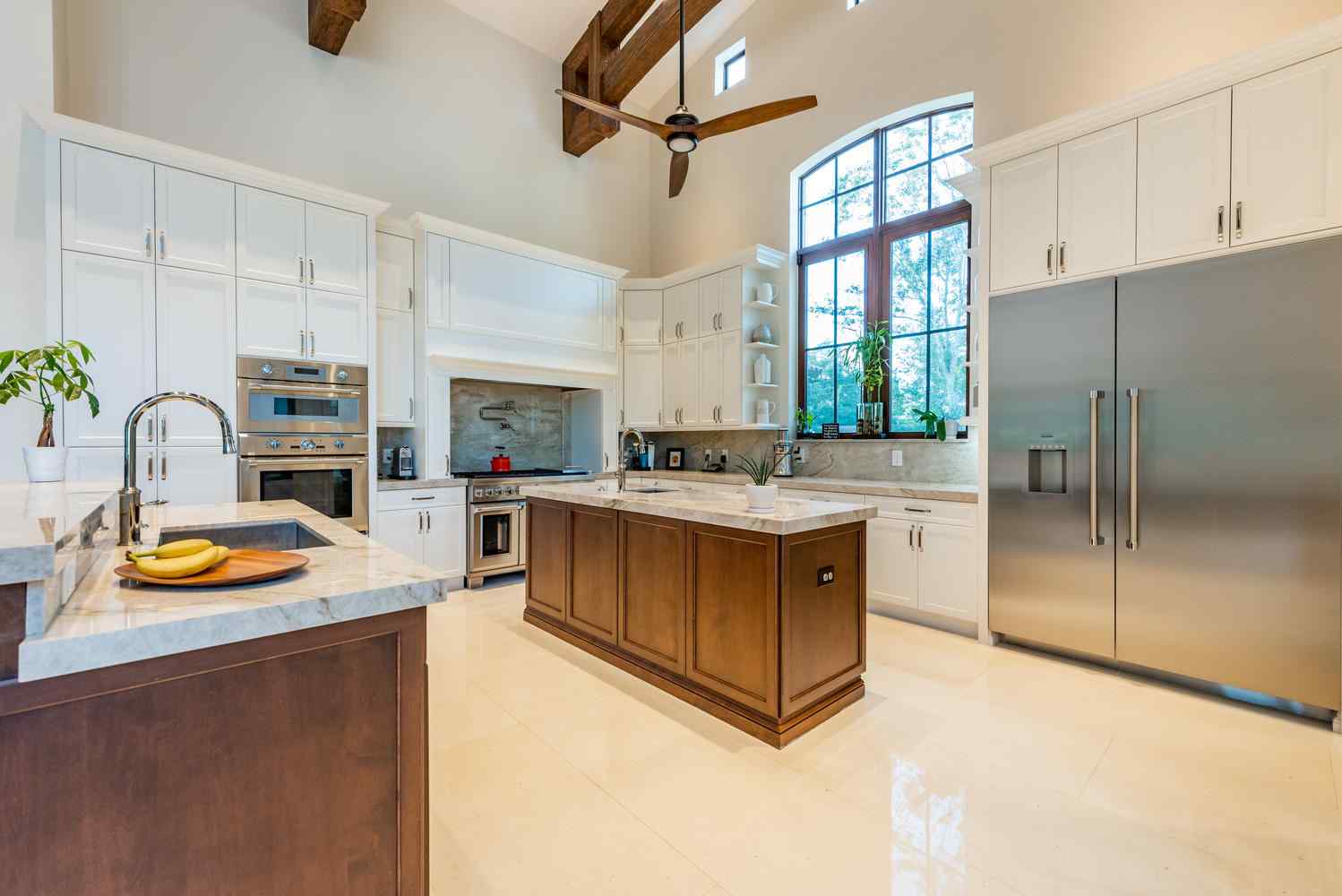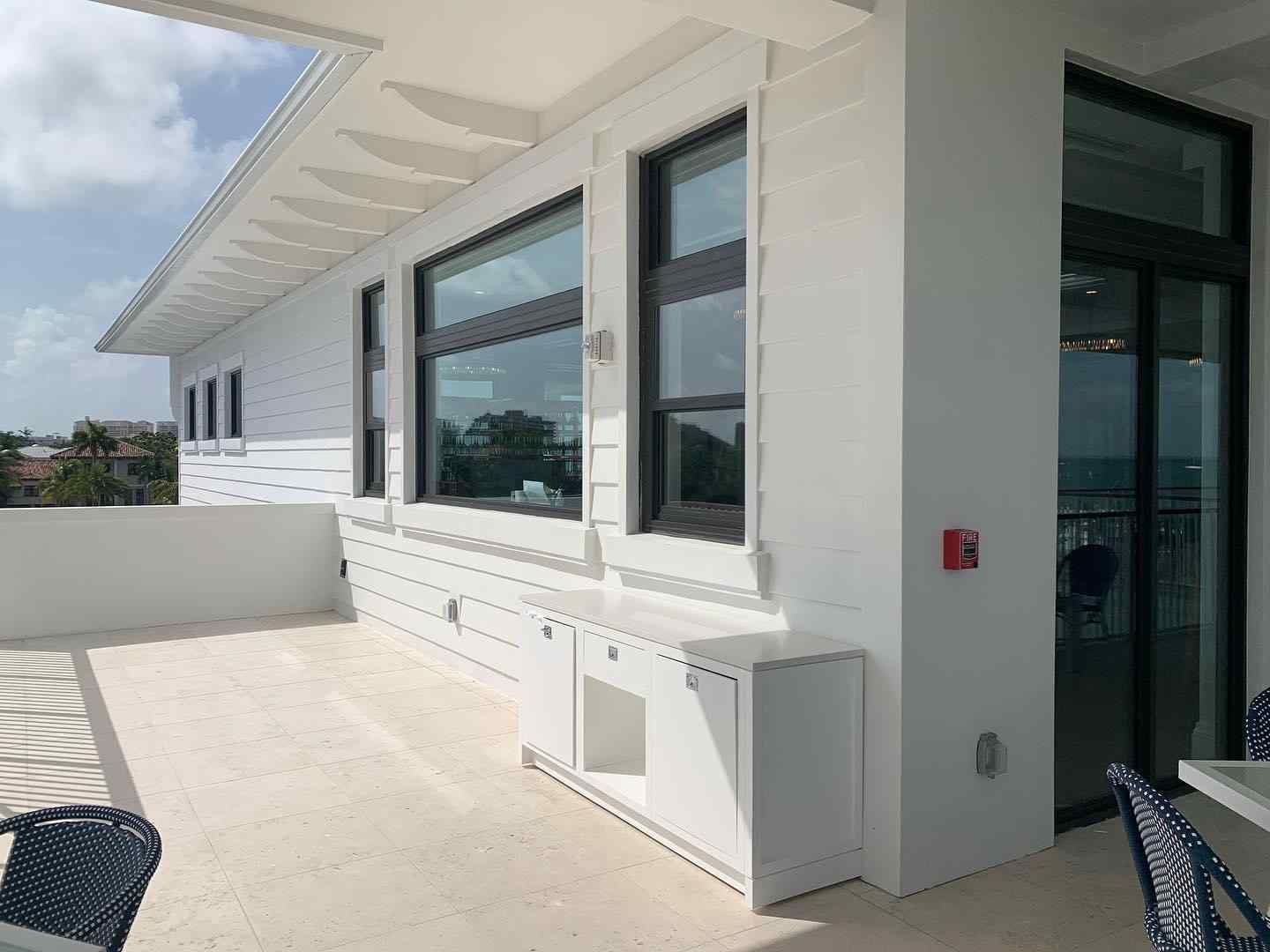Hurricane windows are designed to protect your home from high winds, flying debris, and rain driven by hurricanes. They are designed to be stronger than regular windows and are usually made with impact-resistant materials such as laminated glass, polyvinyl butyral (PVB), and composite materials. They are usually tested to withstand wind speeds of up to 160 mph. Hurricane windows are typically more expensive than standard windows, and they may require special installation procedures.
They are typically installed in place of existing windows or as part of a new construction project. They also need to be properly sealed to ensure maximum efficiency. The benefits of hurricane windows include added protection against hurricane-force winds, improved energy efficiency, and reduced noise levels. They also provide protection from flying debris and can help reduce the risk of water damage.
What Are Hurricane Windows?
Hurricane windows are impact-resistant windows designed to withstand high wind speeds, flying debris, and other impacts common during hurricane-force winds. They are often made of laminated or tempered glass and are designed with a strong, reinforced frame that can resist wind and water. They are often used in areas prone to hurricanes or other severe storms. These windows typically feature heavy-duty frames, reinforced glass, and special locking mechanisms that help to keep them securely in place.
Some types of hurricane windows also resist water penetration, a major concern during a storm. Generally, manufacturers make hurricane windows from laminated glass, a type of safety glass composed of two or more layers of glass bonded together with a plastic interlayer. This interlayer helps hold the glass together if it breaks, preventing injury from flying shards of glass.
Hurricane windows are also rated based on their ability to withstand wind and pressure. These ratings are determined by testing the windows in a wind tunnel, where they are subjected to winds of increasing intensity. The most common ratings for hurricane windows are HVHZHigh-Velocity Hurricane Zone): tested to withstand winds up to 150 mph, and Miami-Dade: certified to withstand winds up to 175 mph it’s worth noting that Hurricane windows are not only useful during a storm but also provide benefits in terms of energy efficiency and sound insulation.

Types of Hurricane Windows
1. Impact-Resistant Windows:
- Impact-resistant windows are designed to withstand the strong winds and debris of a hurricane. These windows are usually made from tempered or laminated glass and are designed to shatter into small pieces if broken, rather than large, dangerous shards.
- Storm Shutters:
Storm shutters are designed to be installed onto the outside of a window or door and can be opened to allow natural light in, or closed and locked during a storm. Storm shutters are made from a variety of materials, including steel, aluminum, and plywood. - Roll-Down Shutters:
Roll-down shutters are similar to storm shutters, but instead of being opened and closed manually, they are operated by a motor and can be lowered with the touch of a button. - Accordion Shutters:
Accordion shutters are made of metal and are hinged together in a series of panels that can be extended and locked into place to cover a window or door. - Hurricane Film:
Hurricane film is a plastic film that can be applied to the inside of a window to add an extra layer of protection. The film is designed to hold the glass together if it shatters, reducing the risk of dangerous shards of glass.
Difference between Impact windows and Hurricane windows?
Impact windows are windows that are made of impact-resistant laminated glass. These windows are designed to resist the impact of flying debris during storms. Hurricane windows are windows made of heavy-duty, impact-resistant materials such as laminated glass and polycarbonate. These windows are designed to withstand the pressures of hurricanes and high winds.
How much does hurricane impact windows cost?
The cost of hurricane windows will vary depending on the size, material, and type of window you purchase. Generally, the cost for hurricane-resistant windows ranges from $200 to $1,500 per window. Installation can range from $125 to $800 per window.
How strong are Hurricane windows?
Hurricane impact windows are designed to be highly resistant to strong winds and flying debris from hurricanes. Depending on the product, they can withstand wind speeds up to 200 miles per hour and can withstand impacts from large objects like 2x4s traveling at speeds up to 50 feet per second.

How to protect windows from hurricane
- Install storm shutters. Installing Storm shutters is the most effective way to protect your windows from hurricane-force winds. They can be constructed from metal, plastic, or wood, and should be mounted over each window in your home.
- Place plywood sheets over windows. Plywood sheets can be used as a temporary measure to protect windows from hurricane-force winds. Measure the size of each window, then cut the plywood accordingly. Once the pieces are cut, nail them into place.
- Use window films. Window films are a relatively inexpensive way to protect windows from hurricane-force winds. They are made of a thin plastic material that adheres to the window and helps to reduce the risk of shattering.
- Reinforce windows with metal. Reinforcing windows with metal can help to protect them from hurricane-force winds. The metal should be placed on the exterior of the window and can be secured with screws or bolts.
- Tape your windows. You can use masking or duct tape to reinforce your windows and help prevent them from breaking during a hurricane.
- Move furniture away from windows. Moving furniture away from windows will help prevent furniture from flying and breaking your windows during a hurricane.
- Close your curtains. Closing your curtains can help block out wind and flying debris, reducing the chances of your windows breaking.
- Secure outdoor furniture and items. Securing loose items outside can help prevent them from flying and breaking your windows during a hurricane.
- Install hurricane-resistant windows. Hurricane-resistant windows are designed in a special manner so that they can bear the force of hurricane-force winds. They are specially made with impact-resistant glass and have typically more prices than regular windows.
What to look for when buying hurricane windows
- High Impact Resistance: Look for windows that are certified to withstand hurricane-force winds and have been tested under rigorous standards.
- Water Resistance: When buying hurricane windows, make sure that they have a water-resistant sealant or coating to keep out water and moisture.
- UV Protection: You should look for windows that are designed to block the harmful ultraviolet (UV) rays coming from the sun.
- Energy Efficiency: Look for windows that are Energy Star certified to help reduce energy costs and maintain a comfortable indoor temperature.
- Durability: Make sure the windows are made from materials that are designed to stand up to harsh weather conditions.
Do I need hurricane shutters if I have impact windows?
No, you do not necessarily need hurricane shutters, if you already have impact windows. Impact windows are designed well to resist strong winds, debris, and other threats associated with hurricanes. Hurricane shutters can offer additional protection, but it is not necessary if you already have impact windows. If you want to install hurricane shutters, make sure to follow the manufacturer’s guide for installation and use.




